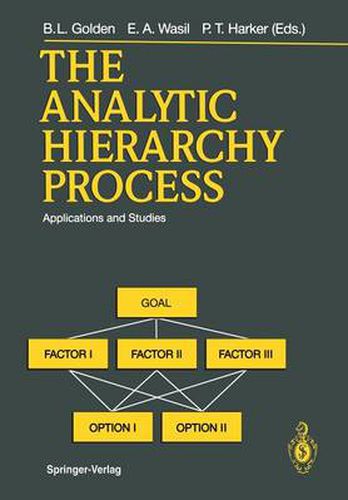Readings Newsletter
Become a Readings Member to make your shopping experience even easier.
Sign in or sign up for free!
You’re not far away from qualifying for FREE standard shipping within Australia
You’ve qualified for FREE standard shipping within Australia
The cart is loading…






This title is printed to order. This book may have been self-published. If so, we cannot guarantee the quality of the content. In the main most books will have gone through the editing process however some may not. We therefore suggest that you be aware of this before ordering this book. If in doubt check either the author or publisher’s details as we are unable to accept any returns unless they are faulty. Please contact us if you have any questions.
Management science is a di scipl ine dedicated to the development of techniques that enable decision makers to cope with the increasing complexity of our world. The early burst of excitement which was spawned by the development and successful applications of linear programming to problems in both the public and private sectors has challenged researchers to develop even more sophisticated methods to deal with the complex nature of decision making. Sophistication, however, does not always trans 1 ate into more complex mathematics. Professor Thomas L. Saaty was working for the U. S. Defense Department and for the U. S. Department of State in the late 1960s and early 1970s. In these positions, Professor Saaty was exposed to some of the most complex decisions facing the world: arms control, the Middle East problem, and the development of a transport system for a Third World country. While having made major contributions to numerous areas of mathematics and the theory of operations research, he soon realized that one did not need complex mathematics to come to grips with these decision problems, just the right mathematics! Thus, Professor Saaty set out to develop a mathematically-based technique for analyzing complex situations which was sophisticated in its simplicity. This technique became known as the Analytic Hierarchy Process (AHP) and has become very successful in helping decision makers to structure and analyze a wide range of problems.
$9.00 standard shipping within Australia
FREE standard shipping within Australia for orders over $100.00
Express & International shipping calculated at checkout
This title is printed to order. This book may have been self-published. If so, we cannot guarantee the quality of the content. In the main most books will have gone through the editing process however some may not. We therefore suggest that you be aware of this before ordering this book. If in doubt check either the author or publisher’s details as we are unable to accept any returns unless they are faulty. Please contact us if you have any questions.
Management science is a di scipl ine dedicated to the development of techniques that enable decision makers to cope with the increasing complexity of our world. The early burst of excitement which was spawned by the development and successful applications of linear programming to problems in both the public and private sectors has challenged researchers to develop even more sophisticated methods to deal with the complex nature of decision making. Sophistication, however, does not always trans 1 ate into more complex mathematics. Professor Thomas L. Saaty was working for the U. S. Defense Department and for the U. S. Department of State in the late 1960s and early 1970s. In these positions, Professor Saaty was exposed to some of the most complex decisions facing the world: arms control, the Middle East problem, and the development of a transport system for a Third World country. While having made major contributions to numerous areas of mathematics and the theory of operations research, he soon realized that one did not need complex mathematics to come to grips with these decision problems, just the right mathematics! Thus, Professor Saaty set out to develop a mathematically-based technique for analyzing complex situations which was sophisticated in its simplicity. This technique became known as the Analytic Hierarchy Process (AHP) and has become very successful in helping decision makers to structure and analyze a wide range of problems.